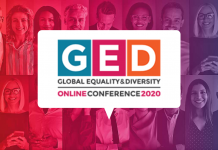As the dust starts to settle on the troubling results of Britain’s first race disparity audit published by the UK Government on 10 October 2017, many Talent Acquisition leaders are now becoming more aware of the critical role they play in this diversity issue.
The facts and statistics paint a clear picture. UK employment rates are lower for ethnic minorities (excluding white minorities) than the overall population across the country.
In 2016, just over 4 percent of White people were unemployed, which is lower than the rate of unemployment for people from all “Other” ethnic groups. The group with the highest rate of unemployment in 2016 was Pakistani/Bangladeshi (11 percent) and the group with the lowest rate was White Other (4 percent).
So, what can talent acquisition leaders do to address the diversity imbalance?
Talent acquisition is uniquely positioned to make an impact by governing and challenging their hiring practices at different stages throughout the recruitment process.
Consultative dialogue on the subject is paramount and has never been more valuable to an organisation than now with this broad and bright spotlight of increased scrutiny.
Those leaders who understand this charter are often unified by a similar mindset and set of best practices:
Diverse teams perform better
The facts all point to teams and/or whole companies that benefit greatly from employees with different viewpoints. This has a direct impact on innovation, agile solutioning, and, ultimately, operational and financial gains.
A recent study carried out by McKinsey, studying hundreds of companies in the UK, US, Canada, and Latin America showed a “statistically significant connection between diversity and financial performance, with organisations in the top quartile for gender diversity 15 percent more likely to have financial returns above their national industry median and organisations in the top quartile for racial/ethnic diversity 30 percent more likely to have financial returns above their national industry median”.
Many organisations have diversity and inclusion programmes and goals applied to their overall strategy. All too often downstream internal communication that explains the importance and value of D&I programmes is not trickled down to the hiring managers in a way that resonates to their specific needs.
Inclusive job postings attract diversity
Recruitment teams must ensure each job description is written with culturally neutral and welcoming tones. Postings that do not use inclusive language can/will directly exclude candidates right from the onset that may be highly qualified and interested in the position.
Best practices recommend to stay away from insider language or any heavy use of one-way “we” statements that describe what the company wants. Instead postings should leverage a more benefit-driven “you” narrative that invites the applicant to assimilate with the qualities and responsibilities of the ideal candidate.
This welcoming and open approach can explicitly, or maybe even subliminally, indicate to a BME applicant that they are applying to an environment which values inclusion.
Diversity intentions are not enough
Many Talent Acquisition leaders do discuss the department’s diversity commitments. However, it often stops there with these good intentions.
Diversity goals must be accommodated by the appropriate supporting operational metrics. Examples may include diversity metrics like talent pool composition or specific hiring goals.
Training for recruiters is often required to shift both the beliefs and the behaviours to align with these new diversity goals. This training should cover Hiring Manager engagement; specifically, ways to work with hiring leadership when/if there are recruitment or hiring decisions that are not compliant with the company’s diversity standards.
Talent Acquisition must continually probe and identify areas of improvement within the recruitment life cycle, and even be prepared to uncover conscious or unconscious interview bias during the selection process, to help effectively govern the company’s approach.
Diversity should be tangibly demonstrated within the interview process
Throughout the interview process, everyone a candidate interacts with will communicate the company, culture, team, job, etc. As such, the members of the interview team should be thoughtfully selected. It’s important to show first-hand that diversity is not only valued, but exercised within the teams.
This will improve the impression and overall employee engagement for all applicants – not just minority candidates.
The recruitment industry is the gatekeeper to Diversity & Inclusion and one of the major catalysts for positive change in making working environments more inclusive, more engaging, more innovative, and more productive.
Thomas Trewick
Director
Sevenstep
sevensteprpo.com








